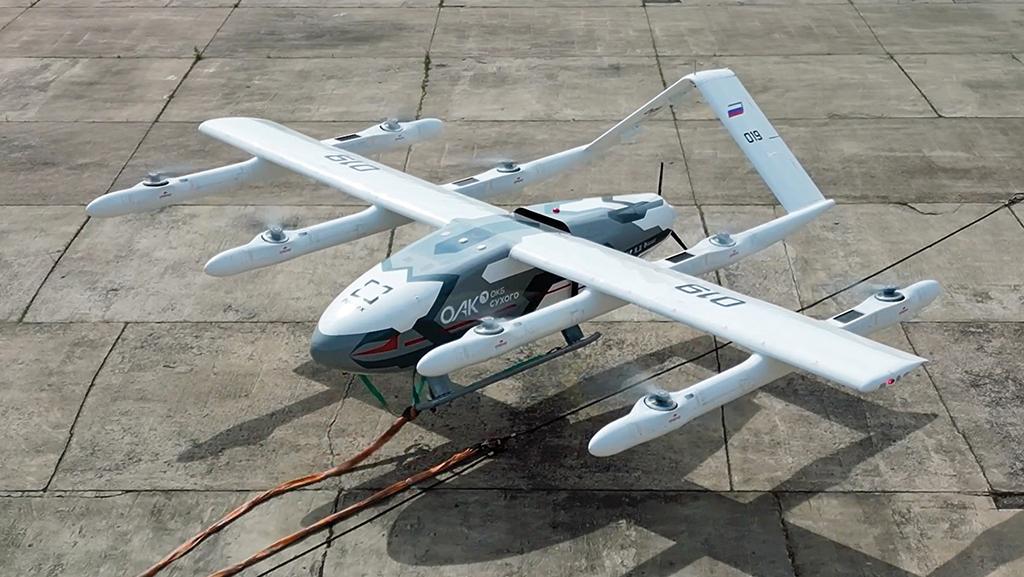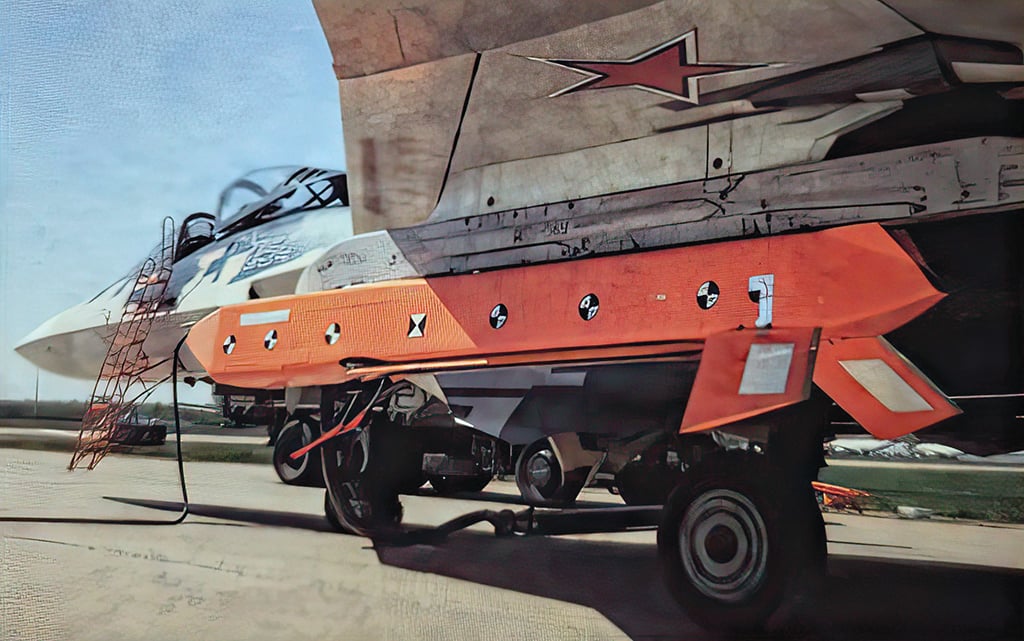This article is published in Aviation Week & Space Technology and is free to read until Sep 11, 2024. If you want to read more articles from this publication, please click the link to subscribe.

The S-76(D) prototype first flew in July.
Sukhoi says the Russian Defense Ministry has given it the go-ahead to begin producing the S-71 air-launched UAV that has recently undergone significant design changes to reflect Russia’s operational experience in Ukraine.
The S-71 exists in two versions to pursue moving targets, the Sukhoi Design Bureau states in a publication commemorating its 1939 founding. One version, designated the S-71K (code-named Kovyor, or “Carpet”), operates like a guided air-to-ground missile, and the other is a more advanced autonomous uncrewed air vehicle (UAV) called the S-71M Monokhrom.
- Russia-Ukraine war lessons drive S-71 design changes
- The aircraft manufacturer tests a vertical-takeoff-and-landing cargo UAV
The company says it adapted the S-71’s current designs from the original 2019 specification to increase range and reduce its radar cross-section, drawing on lessons from the battlefield. The vulnerability of Russian aircraft and UAVs to Ukrainian air defenses has spurred both a desire for greater range and enhanced survivability with the S-71. But the intensity of the fighting has also demonstrated a need for scale, leading Sukhoi to abandon its goal for a multimission system and simplify the design to make mass production easier.
Sukhoi began S-71 captive-carry trials at Russia’s flight research center in Zhukovsky, near Moscow, on April 18. Sukhoi’s chief test pilot, Sergei Bogdan performed the first flight alongside S-71K and S-71M drones suspended under the wing of Russia’s newest fighter, the Su-57.
The S-71 features a trapezoidal fuselage for low observability, with a foldable swept wing and inverted V-shape all-moving fins. It is powered by a single TRDD-50 turbofan, the same engine used on such systems as the air-launched Kh-59M and Kh-101 missiles. The S-71 has an air inlet on the rear and can reach a speed of Mach 0.6 as well as an altitude of up to 8,000 m (26,000 ft.). Sukhoi also said it has moved production of control and guidance systems in-house.
The S-71K deploys Russian cluster munitions. The more capable S-71M features electro-optical sensors to enable day and nighttime operations or thermal imaging range; the platform can also search, detect and engage targets using targeting data stored onboard. Sukhoi says the system can be used with an operator in the loop to guide and validate the UAV-selected target or guide the weapon to its aimpoint. Among the S-71M’s several warhead options are a high-explosive, shaped charge. The S-71K is designed for external carriage by the launch aircraft, while the M version can also be carried in the weapons bay of an Su-57 fighter or S-70 Okhotnik combat UAV.

Sukhoi has also been working on a vertical-takeoff-and-landing (VTOL) UAV that it plans to unveil formally at the Army 2024 exhibition in mid-August in Kubinka, near Moscow. The S-76 Atlas transport UAV originated from a 19-seat aircraft for local airlines and morphed into an uncrewed cargo version with a payload capacity of 1,500 kg (3,300 lb.) and a range of 4,000 km (2,485 mi.). Potential customers requested something different: airport-independent goods transport at far lower cost than using a helicopter.
Sukhoi says that 28,000 settlements in Russia depend on helicopter connectivity and are impossible to reach by land for much of the year, prompting an effort to devise a VTOL system that delivers small payloads at 30-40% less cost than using an Mi-8 helicopter. The UAVs are intended to fly autonomously along routes designated and monitored by an operator who can control up to 12 aircraft. Sukhoi says Russia’s postal service, oil and gas companies as well as regional authorities of the Far East of the Russian Federation have expressed interest in the capability.
The company in September 2023 secured a patent for the S-76 Atlas industrial design after about two years of work on the concept. The vehicle features eight electrically driven lift motors with twin-blade propellers. Sukhoi had planned on using electric engines from Slovenian provider Emrax, but sanctions imposed on Russia after its full-scale invasion of Ukraine in February 2022 required a switch to propulsion systems sourced from domestic suppliers Baranov TsIAM Institute and PISh Future Motors. Sukhoi says the Russian motors provide similar capability. During its cruise phase, the S-76 Atlas is powered by a petrol engine with a pusher propeller.
The S-76 Atlas has a 2 m3 (71-ft.3) cargo hold. It can transport up to 200 kg of cargo and deliver the payload within a radius of 500 km without refueling at the destination. The maximum takeoff weight of the Atlas is 1,500 kg.
To reduce technical risks, Sukhoi built an S-76 test system to validate VTOL performance using a simple frame with electric motors. It first flew last Dec. 7. That same month, Sukhoi completed the construction of an S-76(D) demonstrator. In a video published in late July, the S-76(D) prototype lifted off the ground and rose 1-2 m before landing.




